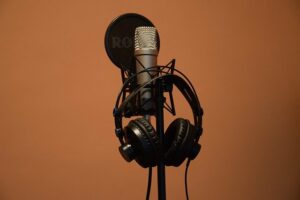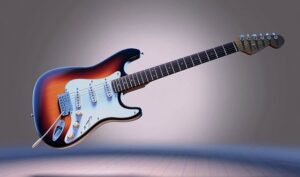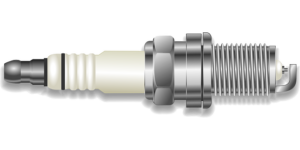In this article, we shall discuss the conversion of sound energy to electrical energy also with different examples in detailed facts.
The sound wave is a longitudinal wave that results in the to and fro motion of the molecules carrying the wave. This motion generates the electrical charges and also produces pressure thus producing the electrical energy.
How is sound energy converted to electrical energy?
Sound energy is converted to electrical energy by the application of electromagnetic induction.
The sound waves impose pressure on the conductor that pinches the conductor to generate electric current. The vibration produced by the sound waves oscillates the molecules back and forth and the mobility of charges generated electricity.
Sound Energy to Electrical Energy Examples
Here is a list of examples of sound energy to electrical energy conversion that we are going to discuss ahead in this article as follows:-
Microphone
The vibrations generated in our vocals travel through the molecules in our mouth and are incident on the microphone.

The microphone converts the audio signals into electrical signals and these signals are further amplified and produce higher amplitude signals.
Loudspeakers
The sound waves are amplified by the loudspeakers. They consist of woofers that vibrate back and forth producing the longitudinal wave. Thus converting sound into electrical signals and back to the sound waves.
Piezoelectric Effect
When the sound waves are made incident on the piezoelectric material the electric currents are formed in the material. On application of sound wave, the strain is imposed on the material thus generating a small voltage in the crystal. The mechanical energy of the sound is converted into electrical energy.
Electricity
The sound energy is converted into heat energy due to the collision of particles in the oscillatory motion. The heat energy produced will be more if the density of the matter is high which is then converted into electrical energy.
Sound Pollution Controller
If the number of vehicles on the road increases or the horn is blown by many numbers of vehicles then this sound energy will be converted into electrical energy when these waves will apply stress on the piezoelectric material thus producing signals to minimize the noise.
Sound Controlled Lights
This type of light is blown ON only when there is a sound produced in the locality. This will help to locate if somebody is there present in that area and will also be beneficial to saving electricity.
Electric Guitar
The electric guitar is connected to the electric amplifier.

The vibrations produced on the string are carried to the amplifier where the electrical signals are again converted to the audio waves.
Seismogram
The seismograms are the devices used to detect the intensity and magnitude of the seismic waves forming due to the plate tectonic activities to determine the exact location of the earthquake. When the seismic wave strikes the weighted pen moves back and forth and plots a seismograph.
Transducer
It is a device used in different appliances like sensors, thermometers, microphones, etc to convert one form of energy into another. The transducer also helps to convert sound energy into electrical energy.
Mobile
The audio waves generated by the mobile are fed to the diaphragm which converts the sound waves into electrical energy. There is research going on to charge the mobile phone based on the sound waves too which will help to conserve electricity and energy too.
Earphones
The earphones connected to the phone or any devices producing the audio waves convert the sound energy into the electrical energy and transfer through the wire forming the electric signals and the magnet connected to the earbud converts the electric signal back into the audio waves.

Charge Street Lights
The noise produced on the road by the traffic can be used to charge the street lights to use the electrical energy at night. The sound energy can be used to generate electrical energy using the piezoelectric material.
Nuclear Power Plants
The heat energy released by the nuclear power plant is released into the seawater and the steam generated is used to run a turbine. The sound energy is generated due to the collision of water molecules and the frictional energy generated while running a turbine which is further converted to electrical energy by the generator.
Motors
The accelerating motor generates sound energy and produces electrical energy too by the conversion of mechanical energy.

Lights Turn on by Clapping
You must have seen the Lights turning ON and OFF with every clap. Thus this is also an example of the conversion of sound energy to electrical energy.
Turbines
The turbines used to convert the wind or wave energy into electrical energy produce sound energy due to the mechanical energy of the running turbine.
Combustion of Fuel in Vehicles
The up and down motion of the piston during the combustion of the fuel in the engine of a vehicle produces a sound. The combustion of the fuel charges the battery of the engine to generate electrical energy.
Frequently Asked Questions
What type of energy is a sound wave?
A sound wave is kinetic energy.
The sound wave travels in the form of longitudinal waves by transferring the energy to the molecules to oscillate back and forth producing the sound wave.
How generator converts sound energy to electrical energy?
The generator has a moving coil and motors.
As the coil moves in the magnetic field it induces the electric voltage due to which it starts vibrating producing the sound energy thus generating the electrical energy.
Click to read more on Sound Energy To Mechanical Energy.
Also Read:
- Sound energy to mechanical energy
- Chemical energy to electrical energy
- Kinetic energy to mechanical energy
- Net energy vs gross energy
- How to harness elastic energy in catapult systems
- Why is energy crucial in environmental physics
- How to calculate mechanical energy in automotive systems
- How to measure the radiant energy output of different light bulb types
- Mechanical energy examples
- How to find energy required to vaporize
Hi, I’m Akshita Mapari. I have done M.Sc. in Physics. I have worked on projects like Numerical modeling of winds and waves during cyclone, Physics of toys and mechanized thrill machines in amusement park based on Classical Mechanics. I have pursued a course on Arduino and have accomplished some mini projects on Arduino UNO. I always like to explore new zones in the field of science. I personally believe that learning is more enthusiastic when learnt with creativity. Apart from this, I like to read, travel, strumming on guitar, identifying rocks and strata, photography and playing chess.